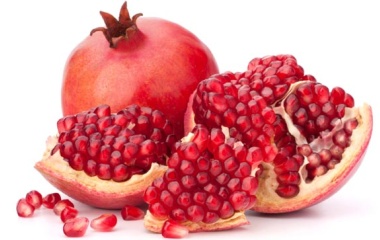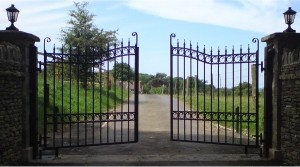
Perhaps the most beautiful aspect of the Yamim Tovim, especially in Temple times, was the coming together of Jews from all walks of life to celebrate together in Jerusalem. “Rava expounded: What is the meaning of the verse: ‘How beautiful are thy steps in sandals, O prince's daughter’. [It means:] How beautiful are the feet of Israel when they go up on the festival pilgrimage” (Chagiga 3a). When Jews join together--whatever the reason--there is great beauty. When they do so to revel in the Divine presence, the beauty is enhanced.
With the destruction of the Temple, our celebration of Yom Tov was radically altered. No pilgrimage, no Temple, no sacrifices and no multitudes of people joining together. Yet if we could no longer visit G-d in His home, we could do the next best thing; visit our teachers. “et, And you shall fear G-d”. As Rabbi Akiva explained, “et” comes to include Torah scholars. If we must visit G-d, we must visit those who teach us Torah--“there is a mitzvah to visit one’s teacher on the holiday”. The importance attached to this [often-neglected] mitzvah is demonstrated by the fact that it is the paradigm of the concept “that one who is involved in one mitzva is exempt from performing another mitzvah”. To cite the Talmudic example, those who are travelling to visit their teachers are exempt from the mitzvah of Sukkah.
The Gemara relates how, in fulfillment of this dictum, Rav Yochanan ben Bruka and Rabbi Eliezer ben Chishma went to visit their teacher, Rabbi Yeshoshua. When they arrived, Rabbi Yehoshua asked them, “What new insight was there in the Beit Midrash today?”. When they demurred that “'We are your students, and from your waters we came to drink,' he said to them, 'Nonetheless, it is not possible for [there to be] a Beit Midrash without a new insight'” (Chagigah 3a). How beautiful when teacher and student seek to learn from each other.
Every time we involve ourselves in learning, there is insight gained. We may have learned the same material many times before, we may know more than the teacher, the material may be the most basic, but it is not possible to go to the Beit Midrash and not gain a new insight. And if not, we have gone through the motions, but we have not truly learned. “One cannot compare one who learns something 100 times to one who learns it 101 times” (Chagigah 9b).
Rav Yochanan ben Bruka and Rabbi Eliezer ben Chishma told Rabbi Yehoshua that discussion in the Beit Midrash centered around the mitzvah of Hakhel (which we will read this coming Shabbat). During Sukkot following the Shmitta year, we were to “gather the people, the men, the women, and the [infant] children, and the proselyte that is in your gates, so that you may listen, so that they may learn and fear the Lord, your G-d’ (Devarim 31:12). In the Beit Midrash that day, they taught, “If the men come to learn and the women to listen[1] , the children, why do they come? In order to give reward to those who bring them” (Chagiga 3a). When Rabbi Yehoshua heard this, he exclaimed, “A beautiful pearl you had in your hand, and you sought to keep if from me!”.
As with the teaching of Rava cited above, there can be nothing more precious than parents and their children both big and small joining together to mark the end of the Shmitta cycle, to celebrate Sukkot, and to hear words of Torah.
[1] As Tosafot notes, this teaching is not in sync with the view of Ben Azzai that one is obligated to teach his daughter Torah (Sotah 20a). Rather, this teaching follows the view of Rabbi Eliezer that one should avoid teaching his daughters Torah. As many Torah giants have explained, in our times, even according to the view of Rabbi Eliezer, we are allowed and even obligated to teach Torah to women at the highest of levels, just as we do (in theory) for men.



